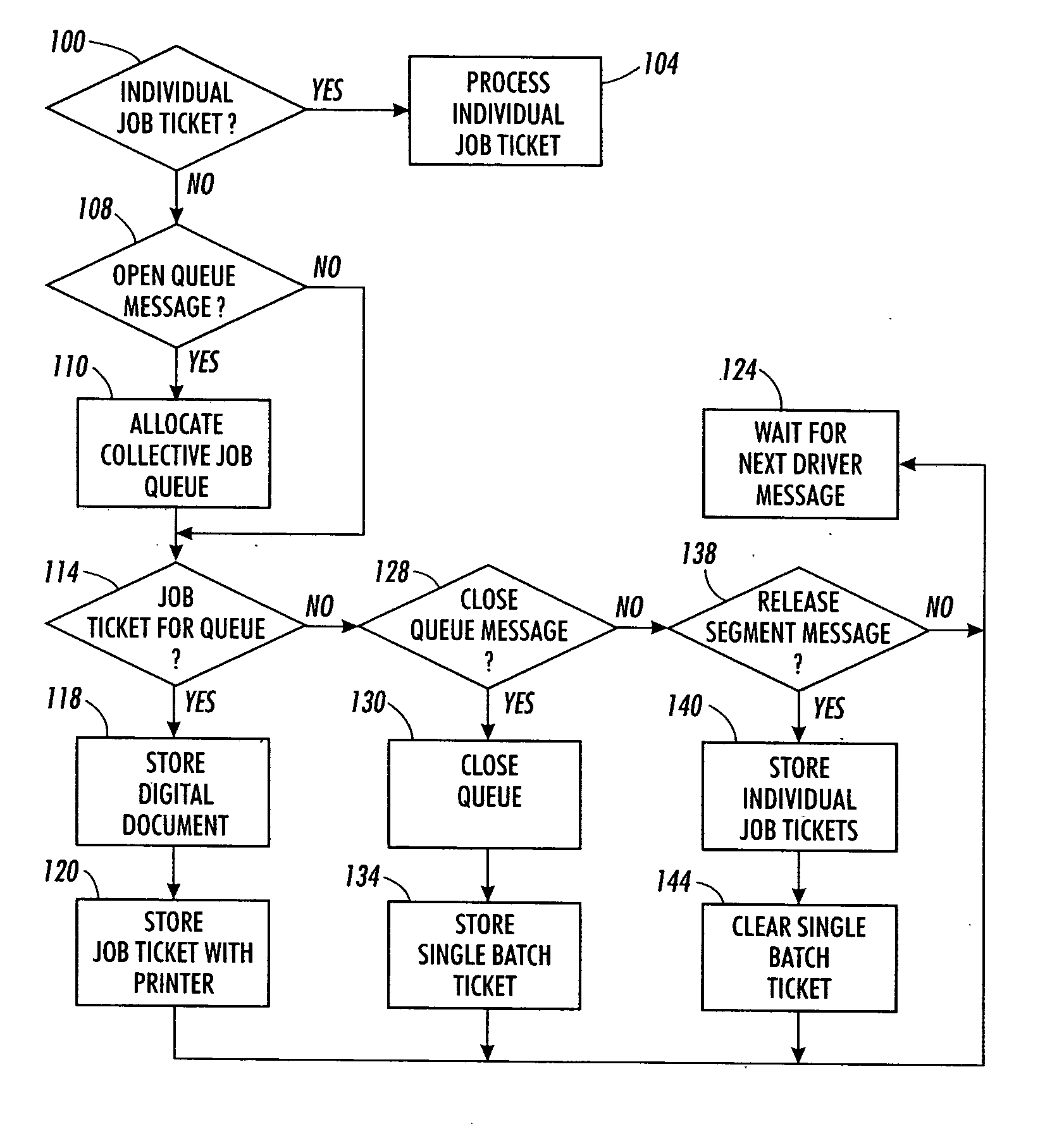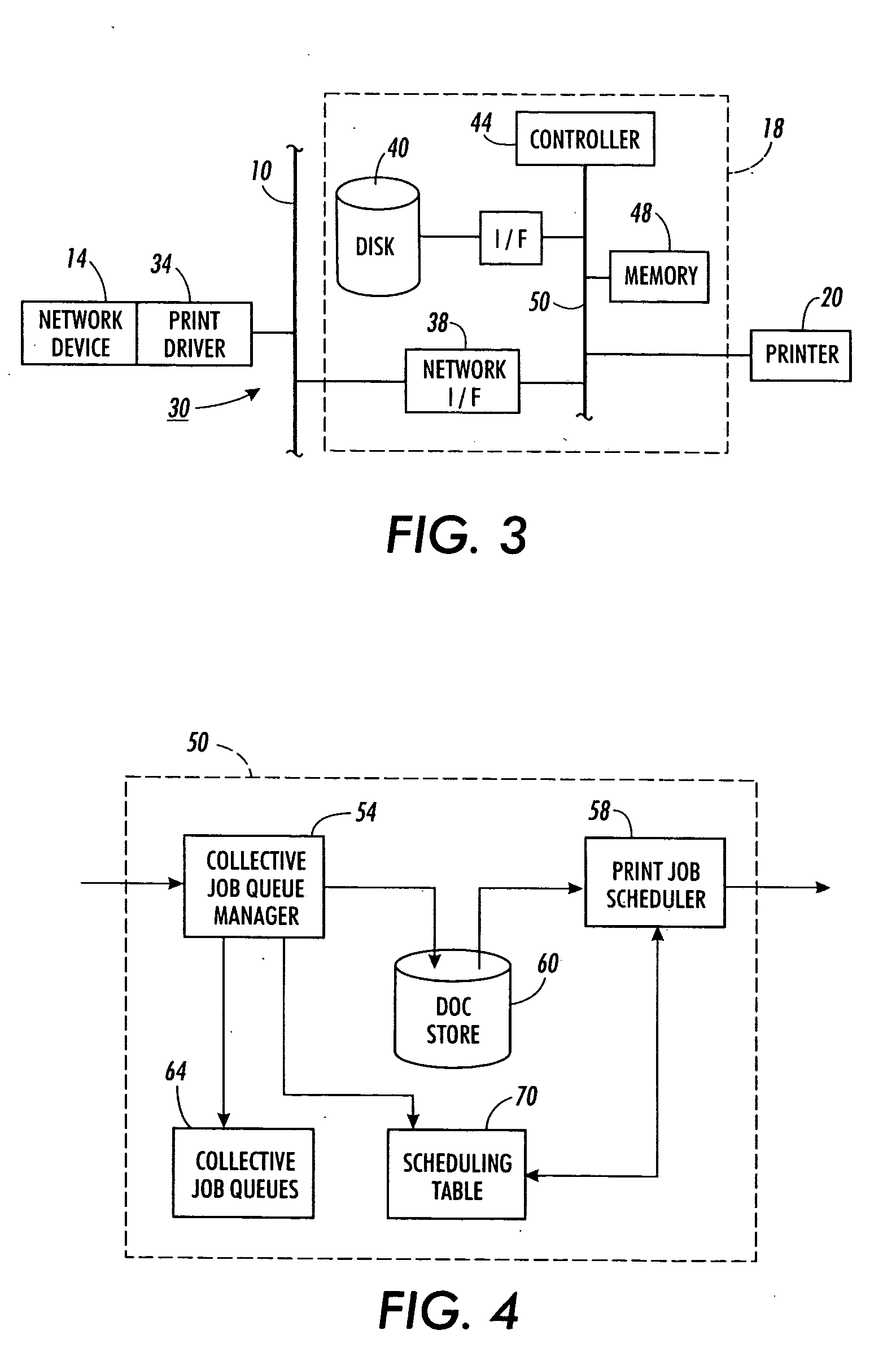Method and system for managing print job files for a shared printer
a printer and print job technology, applied in the direction of digital output to print units, instruments, digitally marking record carriers, etc., can solve the problem of delayed collection job queues opened before the first collected job queue is printed, and achieve the effect of facilitating the recovery of print jobs
- Summary
- Abstract
- Description
- Claims
- Application Information
AI Technical Summary
Benefits of technology
Problems solved by technology
Method used
Image
Examples
Embodiment Construction
[0023]FIG. 1 shows an example of a network 10 in which the principles of the present invention may be implemented. Network 10 includes network devices 14 and a network controller 18 that couples printer 20 to the network 10. The network devices 14 may be user devices that generate digital documents for printing on printer 20. Such devices include personal computers, document scanners, and the like. A document imaging device, such as a scanner, may also be coupled to the network 10 through a network device 14. The network devices 14 and the network controller 18 communicate in a peer-to-peer relationship.
[0024] Using like numerals to identify like components, another example of a network 24 in which the principles of the present invention may be implemented is shown in FIG. 2. The network 24 includes network devices 14, a server 28, and a printer 20. The server 28 performs the functions of the network controller 18 as well as those functions typically performed by a server in a serv...
PUM
 Login to View More
Login to View More Abstract
Description
Claims
Application Information
 Login to View More
Login to View More - R&D
- Intellectual Property
- Life Sciences
- Materials
- Tech Scout
- Unparalleled Data Quality
- Higher Quality Content
- 60% Fewer Hallucinations
Browse by: Latest US Patents, China's latest patents, Technical Efficacy Thesaurus, Application Domain, Technology Topic, Popular Technical Reports.
© 2025 PatSnap. All rights reserved.Legal|Privacy policy|Modern Slavery Act Transparency Statement|Sitemap|About US| Contact US: help@patsnap.com



